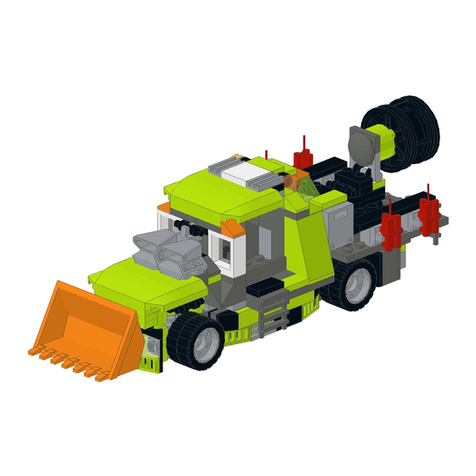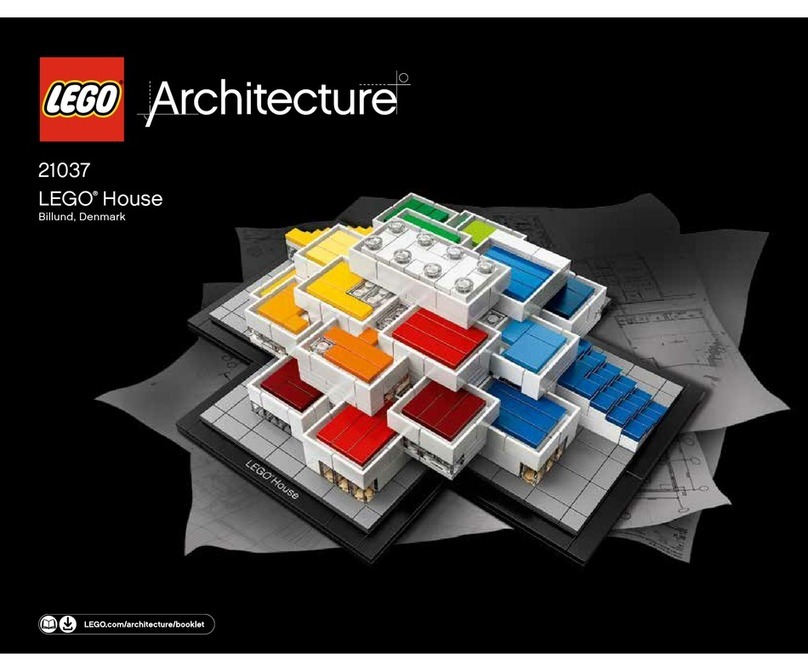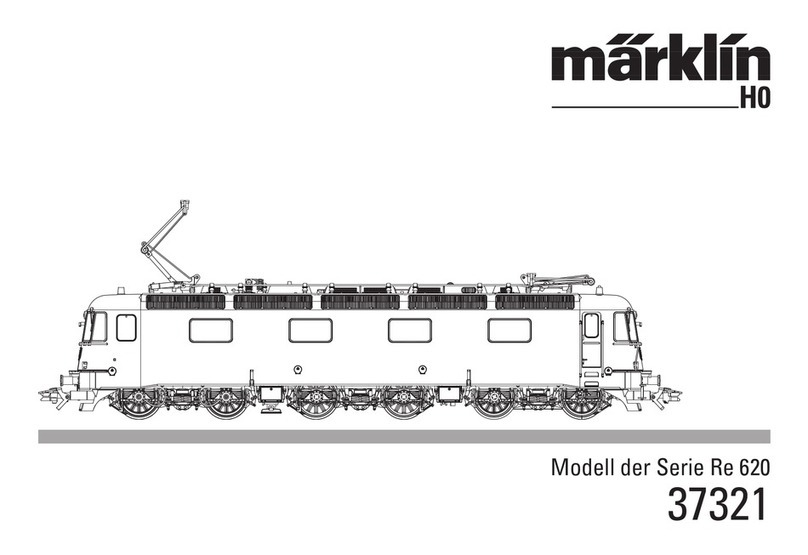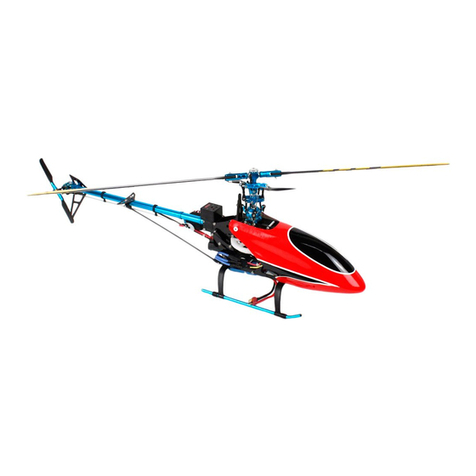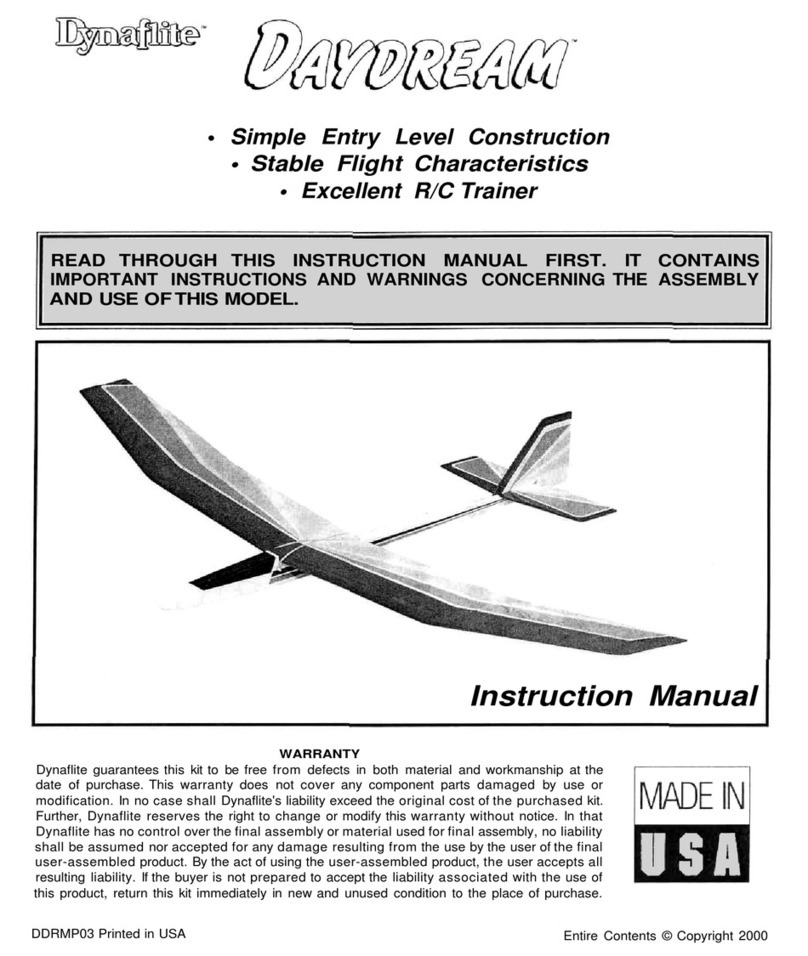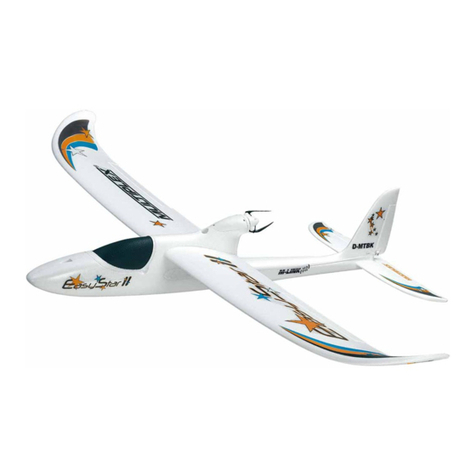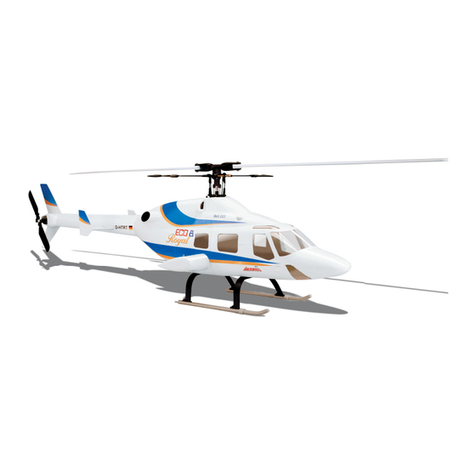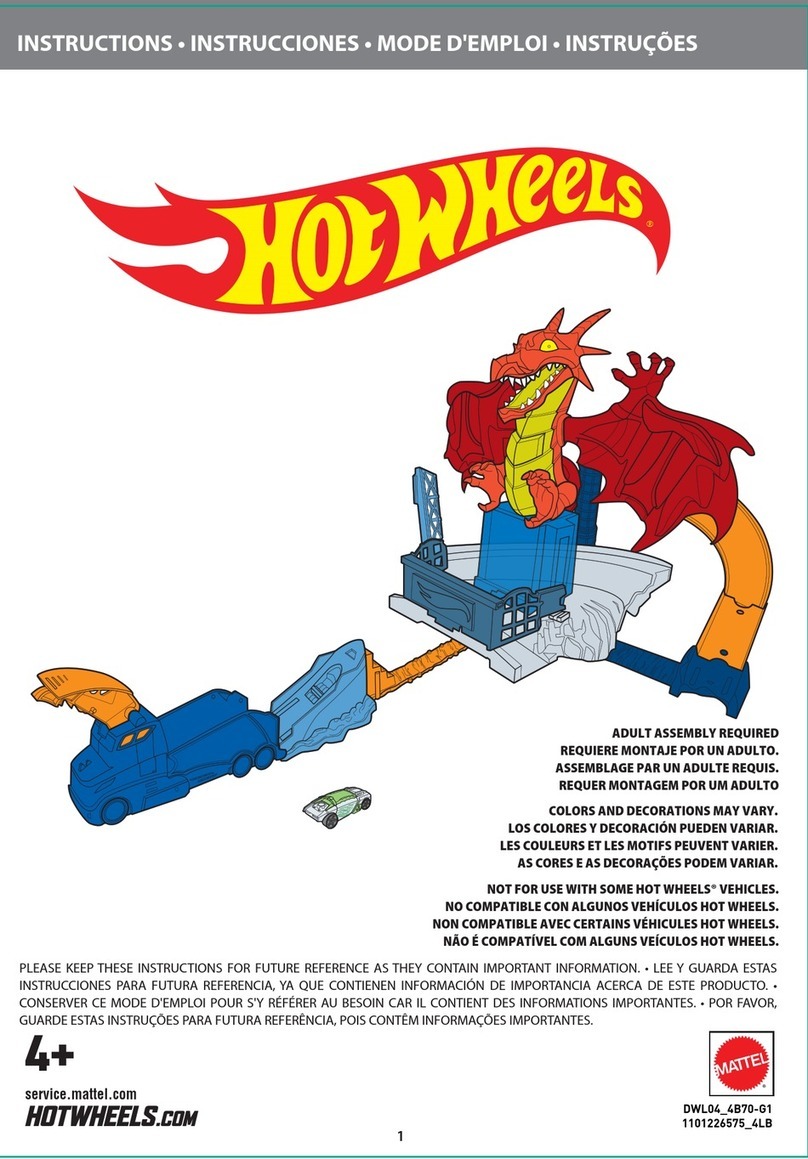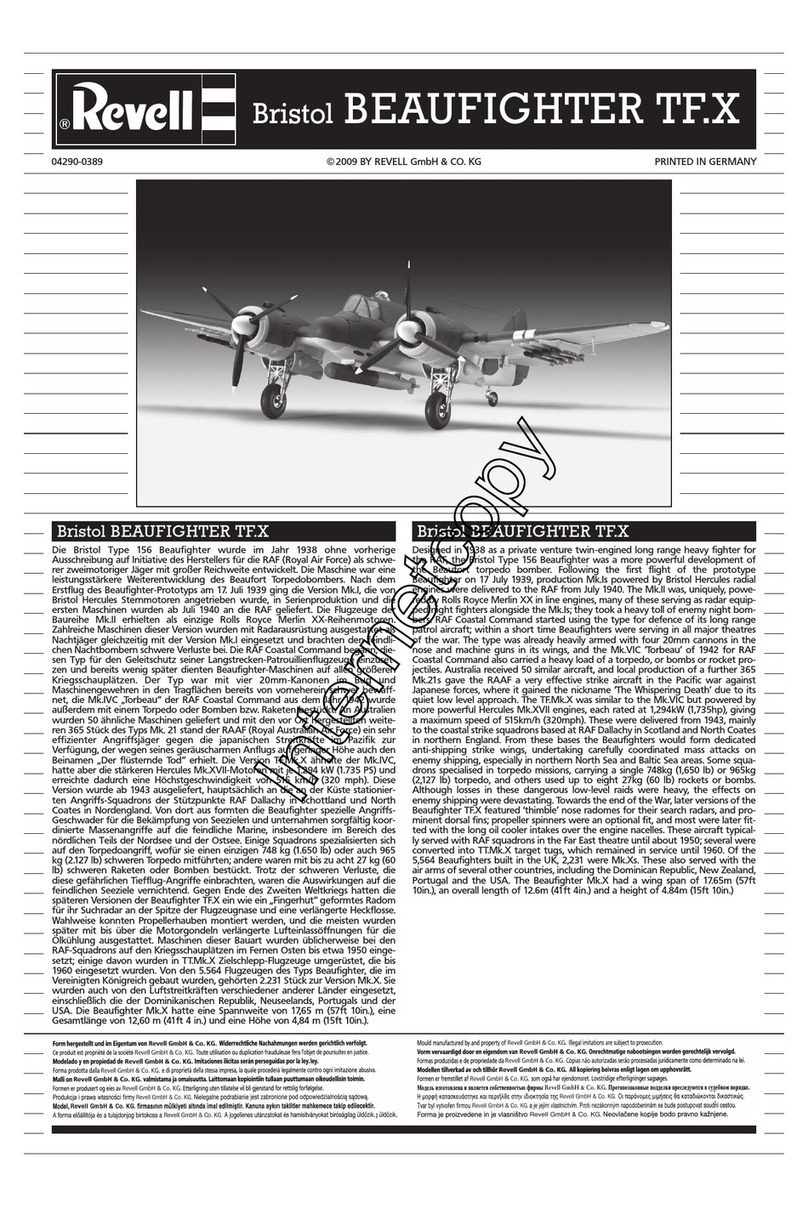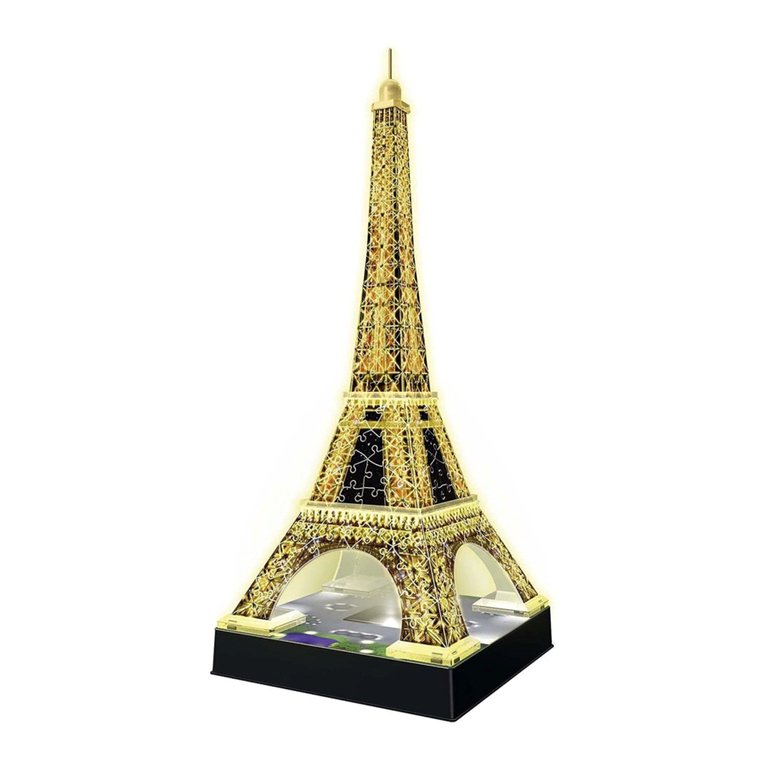
. ADDING THE LENS
Hold the lens at the intended place and fixate it on both sides. Adjust
the mount so that the beam hits the lens at its center. The height can
be adjusted at the places marked b the red arrows.
FINE TUNING
There should now be an interference pattern on the screen. The center
of the pattern can be shifted bei carefull adjusting the calibratable
mirror mount and the lens.
TIPS AND POSSIBLE PROBLEMS
1. Should the front surface mirrors be placed at equal distances, the
rings of the interference pattern might be too far apart and mostl
not recognizable. In this case, it might help to take out the Lego-
part with the screw and turn it for an additional one or two
windings.
2. The interferomter is susceptible for all kinds of vibrations.
Therefore, it is advised to place it on a stable surface. It might be
helpful to use a clamp for fixating the interferometer to the table.
3. The stabilit can often be increased b making sure to press the
bricks into each other whilst building the parts. This can be
especiall helpful at the links between the ground plates.
CALCULATING THE WAVELENGTH
To determine the wavelength of the laser, the gear is turned b the lever
at the end of the transmission and the change of rings in the
interference pattern is counted. The ration between rings and turns can
be calculated b using the transmission ratio of the screws.
The transmission is constructed so that one full turn of the lever means
of a turn of the screw.
The screw has a pitch of 0,8mm. This means a shift of the sled b
per turn.
All in all, one can get the wavelength b using
.
ist he distance that the sled travels, the number of ring shifts and
the number of turns of the lever.

